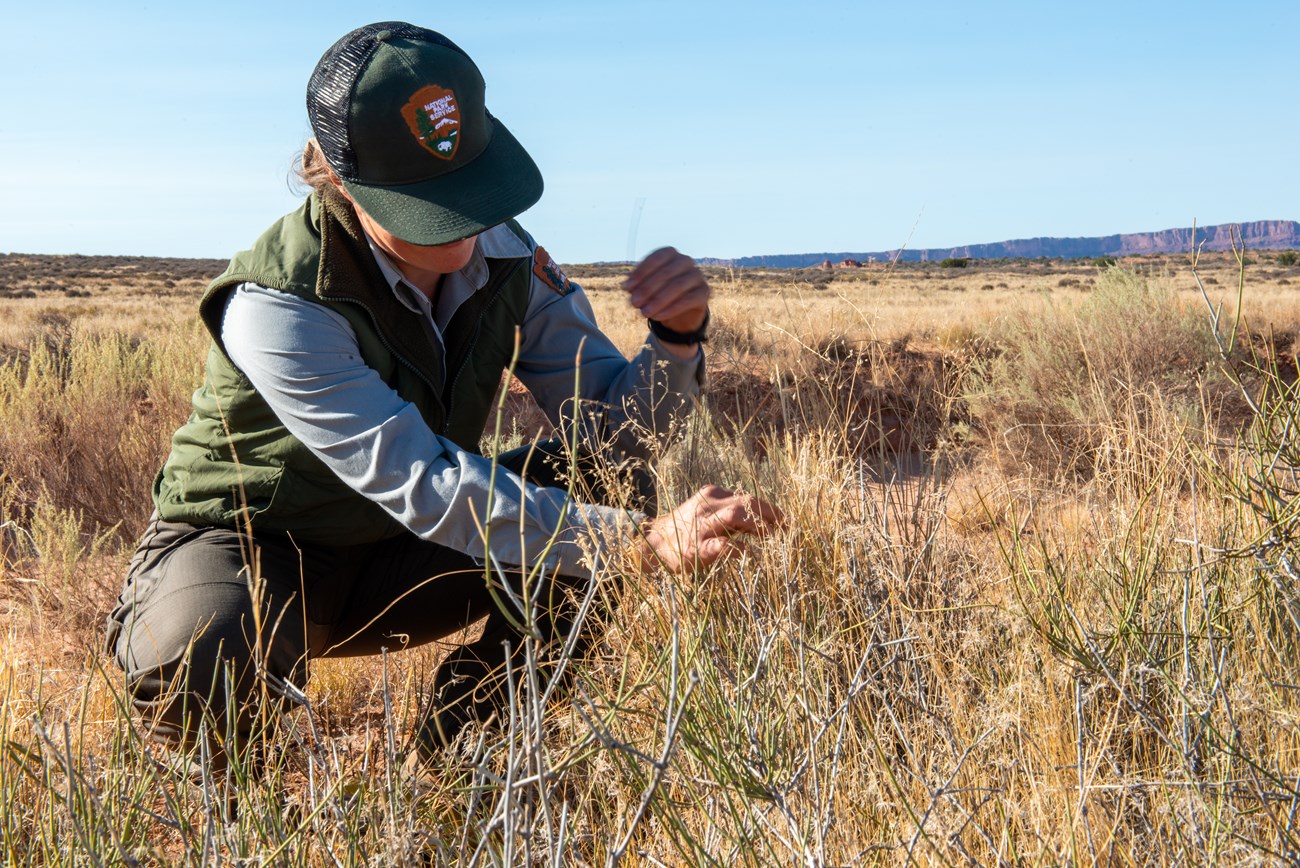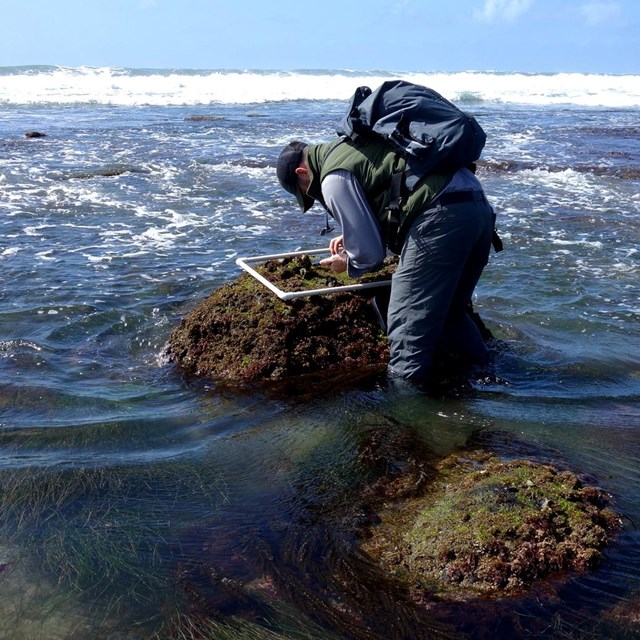
NPS/Veronica Verdin National parks protect a tremendous variety of natural and cultural wonders that provide countless opportunities for scientific research. Observing, studying, and monitoring the arches at Arches—or, at other parks, the features for which they were established—is only part of the picture. Since many parks prohibit activities that occur elsewhere on public and private lands (such as mining, grazing, and off-road vehicle use), they can serve as "control" areas to which scientists can compare the effects of these activities elsewhere. National parks in the American West often serve as the best model for what an undisturbed landscape should look like. In addition to natural history, the human history of Arches spans millennia. Park staff monitor cultural sites and maintain archives and collections to tell the story of human interaction with the Arches landscape. Science and research in Arches also aids park managers. Much like a physician monitors a patient's heartbeat and blood pressure for diagnostic purposes, National Park Service officials need accurate information about the resources in their care. Specifically, they need to know how and why natural systems and cultural and historic landscapes change over time, and what amount of change is normal, in order to make sound management decisions. The Inventory & Monitoring program consists of scientists who monitor the "vital signs" of Arches' ecosystems. Other field work is conducted by park staff, graduate students, or independent researchers. You can learn about recent park research in the article list below.
Research PermitsPersons wishing to conduct scientific research in any of the Southeast Utah Group of parks can apply for a research and collection permit. Science and Research ArticlesMore From Around the National Park System |
Last updated: April 18, 2025


